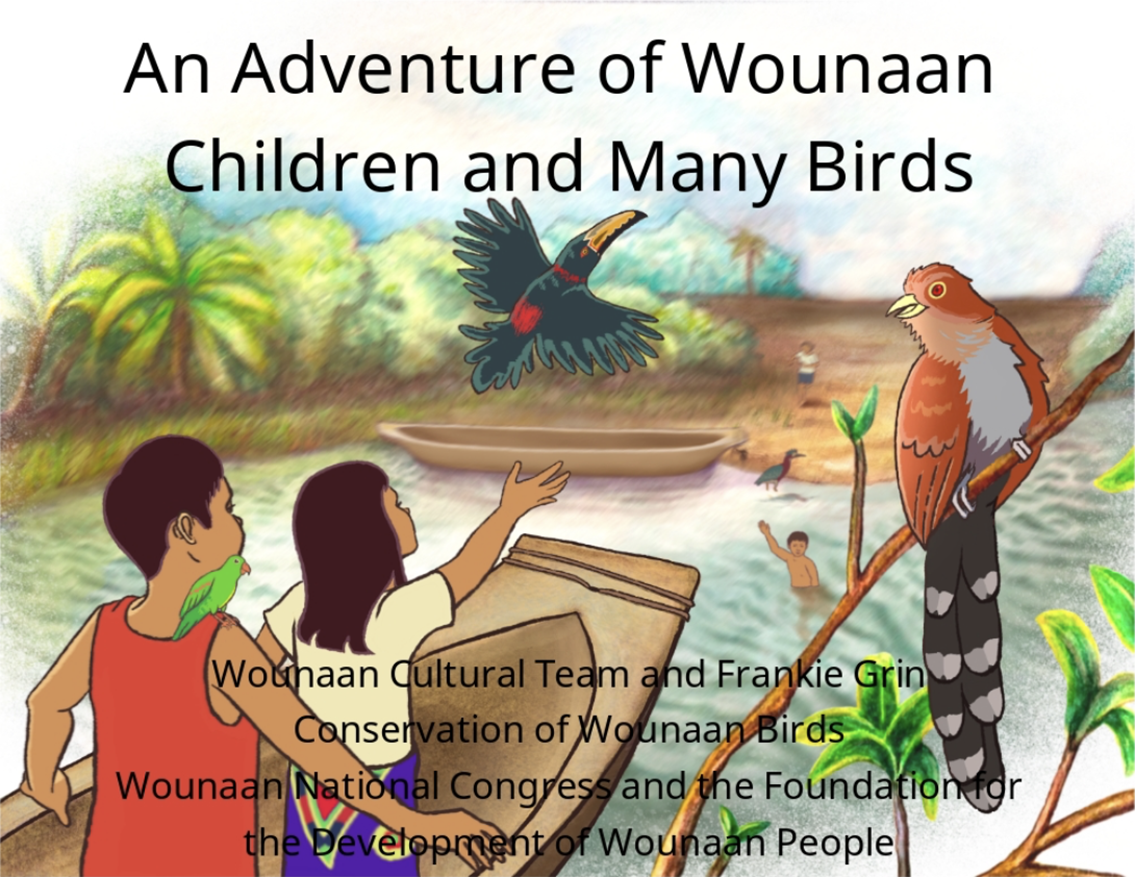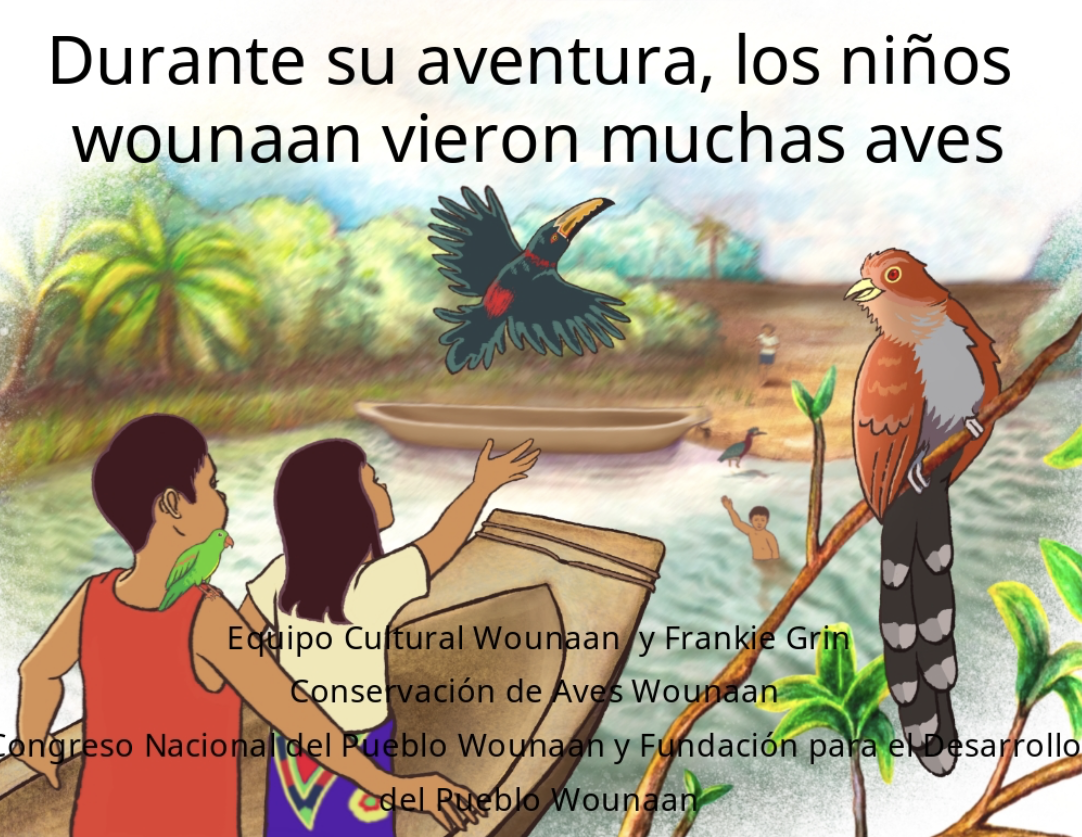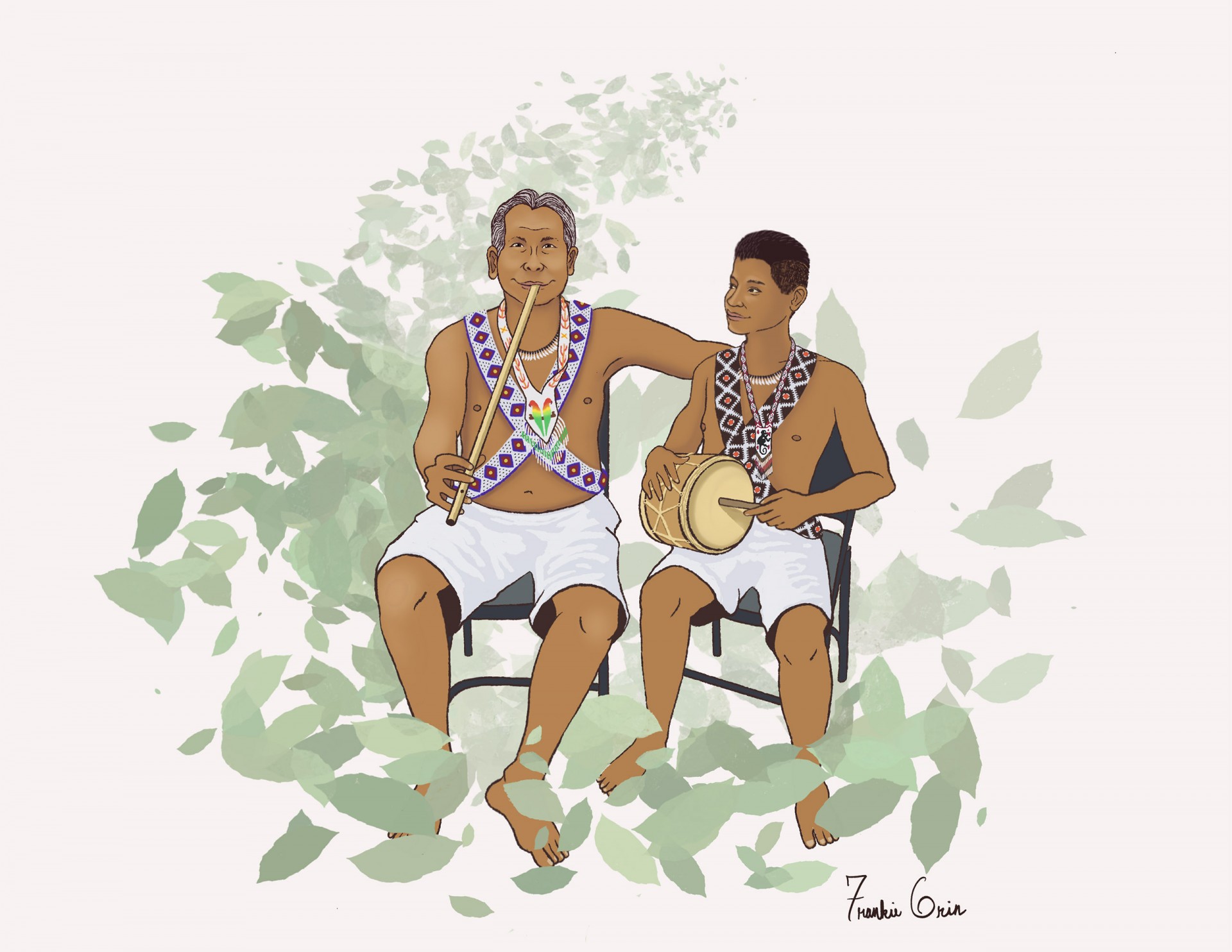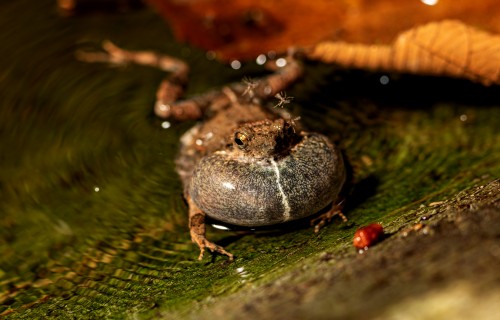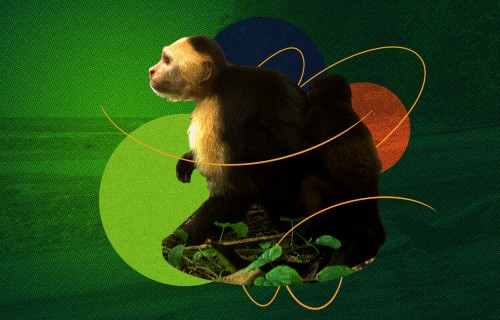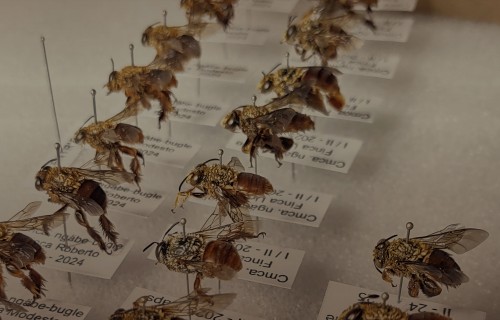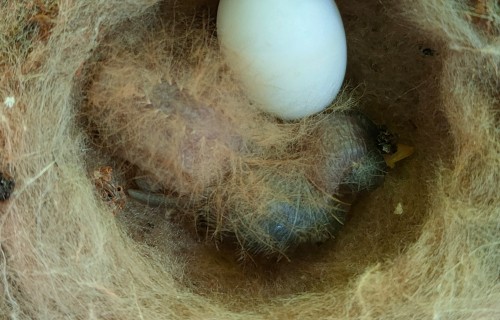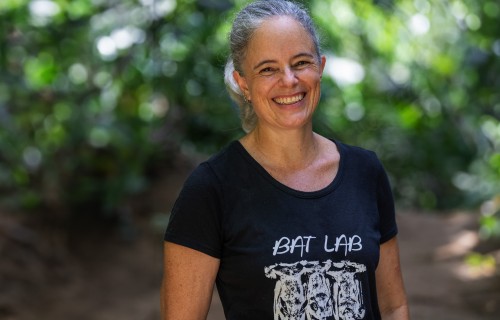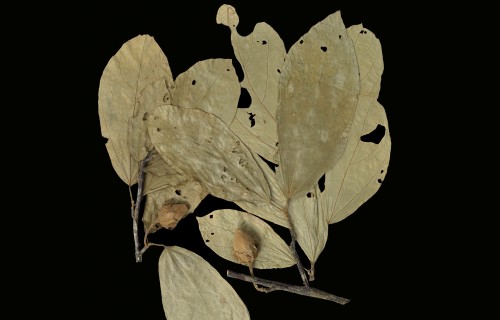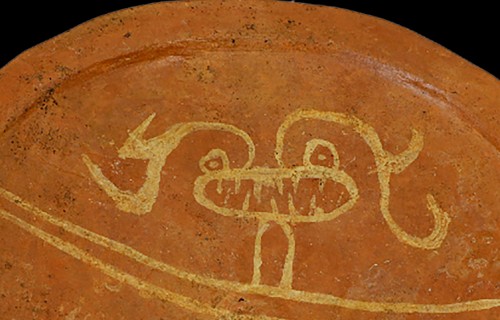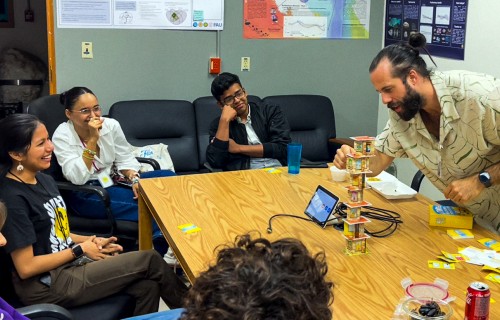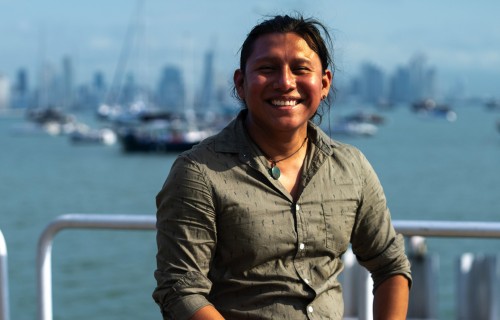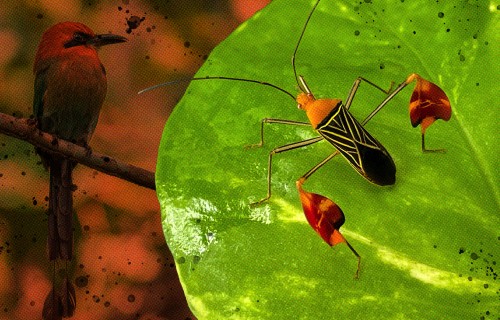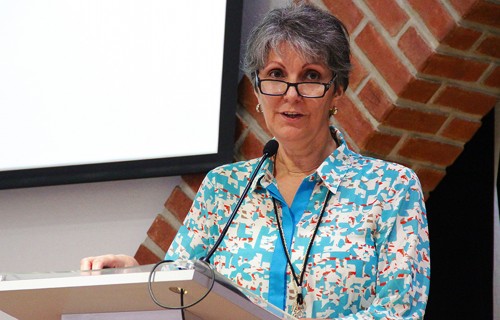Túngara frog tadpoles that grew up in the city developed faster but ended up being smaller.
Multilingual
storytelling
The Adventures of Wounaan
Children and Many Birds
Panamá
An illustrated children’s book published in the Wounaan language, Spanish and English aims to preserve, value and respect the stories and lifeworlds of the Wounaan indigenous people of Panama.
About three years ago, the Wounaan Indigenous people invited STRI Research Associate and University of Georgia anthropologist Julie Velasquez Runk to join them in a collaborative effort that resulted in the creation of a trilingual illustrated children’s book that captured the essence of their ancestors’ stories and world views. Wounaan chaain döhigaau nemchaain hoo wënʌʌrrajim or “The Adventures of Wounaan Children and Many Birds” was published last November in Wounaan meu, English and Spanish.
The project, which was supported by grants from the Small Grants Program of the Global Environment Facility and the UNDP to the Foundation for the Development of Wounaan People in coordination with the Wounaan National Congress, focuses on the Wounaan —one of the seven Indigenous groups of Panama, which is also present in Colombia— and their relationships with birds.
The thread of the story follows two siblings, Chibau and K'õsi as they explore their community, its traditions and people and environment relationships. Along the way, they encounter many bird species, each with their own significance to the Wounaan culture.
The book was first written in Wounaan meu by the Wounaan Cultural team, which included members of the Wounaan community Chenier Carpio Opua, Doris Cheucarama Membache, Rito Ismare Peña, Dorindo Membora Peña and Chindío Peña Ismare, as well as anthropologist Julie Velásquez Runk. Frankie Grin, a graduate of the University of Georgia’s scientific illustration program, was chosen through a contest by the Wounaan authorities to illustrate the book. As part of her artistic process, she explored the Wounaan shapes, forms and movement, as well as different formats, from watercolor to digital art, depending on what she aimed to transmit and worked closely with the team to revise and finalize the illustrations.
An article published in the journal genealogy last October described the process behind this collaboration, highlighting the importance of stories to Indigenous’ people’s sense of identity, and the Wounaan people’s concern that their ancestors’ stories are no longer frequently told.
As part of the story, siblings Chibau and K'õsi watch the women of their community dancing the vulture dance, and learn about the origins of this ancestral cultural practice. Credit: Frankie Grin.
Thus, one of the team’s objectives with the storybook was to transmit Wounaan lifeworlds —such as the care for birds and nature in general— through the creation of materials in Wounaan meu for Wounaan children, and also for a larger audience, with the translation of the story to English and Spanish.
As a way to honor his life and essence, The Adventures of Wounaan Children and Many Birds opens with an illustration of Rito Ismare Peña, one of the elders of the Wounaan Cultural team, and also a former national chief and ceremonial specialist of the Wounaan people, who passed away before the completion of the project. He is playing the flute, next to his grandson.
As a way to honor his life, his legacy and his contributions to the project, the book opens with an illustration of Rito Ismare Peña next to his son. Rito was one of the elders of the Wounaan Cultural team, and a former national chief and ceremonial specialist of the Wounaan people. Credit: Frankie Grin.
The book is now available for sale on the StoryJumper platform, as print-on-demand, and also as a digital book and in a digital audio format.
“The digital book format is meant to reach many more people,” said Chenier Carpio Opua, of the Wounaan Cultural team, during the book presentation via Zoom in November. Meanwhile, the digital audio format is meant to honor the importance of oral storytelling in the Wounaan culture and the verbal poetics of their language.

